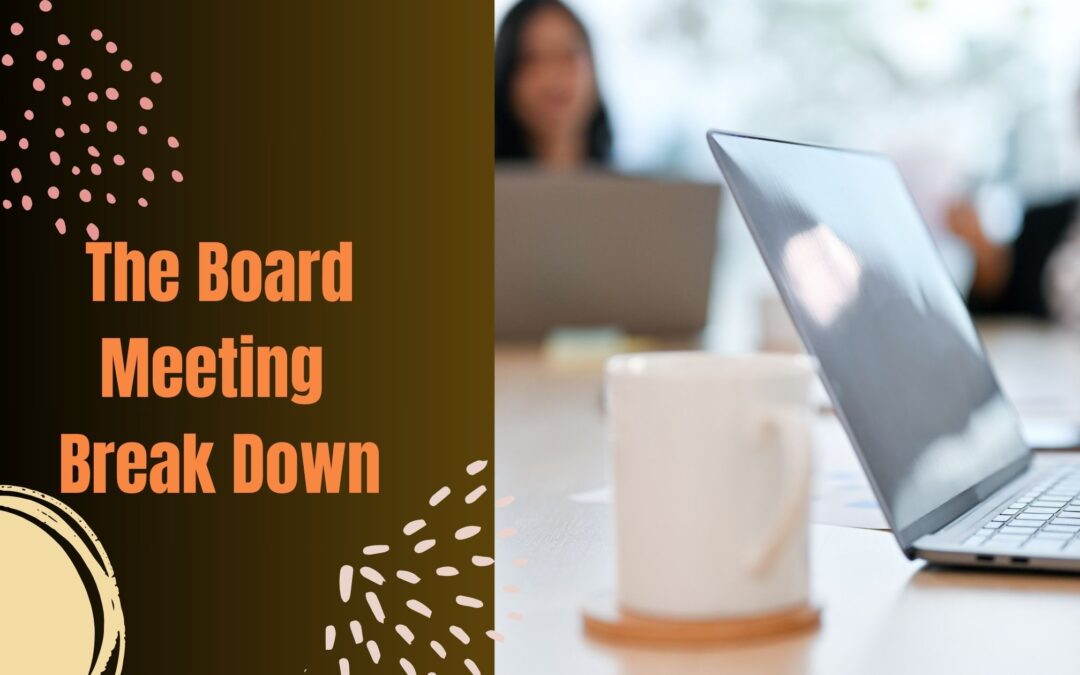One requirement that comes with joining most organizations is their meetings. And this is true for HOAs as well. The HOA is a categorized non-profit corporation under the law. So, HOA board meetings are required. Just like a regular corporation must hold regular meetings of its officers and shareholders, the HOA must hold regular meetings of its board members and homeowners.
In addition to the law requirement, board meetings are necessary for a happy and healthy HOA. In addition, meetings that are well-run reap more benefits. These benefits ultimately help reach the HOA goals. Successful meetings include accomplished HOA tasks, meeting attender’s time and participation utilized well, and more.
Ok, that is a nice idea, but what actually is a good board meeting? And what makes an HOA meeting go well? We have some tips to help.
Have the “Right” Number of Board Meetings
First, try to have the best number of HOA board meetings every year. Your governing documents will set a minimum number of times the board needs to meet. These vary depending on the size of your association. Smaller HOAs might only be required to have board meetings four times a year.
In contrast, most larger ones hold monthly meetings. Additional meetings should only occur when there is an important, urgent issue. The ideal is to make sure you are covering everything necessary without having so many meetings that you can’t get people to show up.
Follow Your HOA Guidelines
Next, the second thing board members can do is make sure the meeting follows general association guidelines. This means making sure there is a minimum number of participants required for conducting official business. Also, how many people are needed will be detailed in each HOA’s governing documents. Moreover, giving advanced notice about the meeting will help make sure you have enough people attending.
Also, your governing documents will specify who can participate in a meeting. Usually, homeowners are allowed to attend and participate in open discussions. Although, there might be guidelines in your documents on what that participation means—things like time limits when speaking.
Depending on the topics of the meeting, additional people may be allowed to attend but not participate. Some examples would be vendors, relatives of homeowners, or renters.
Have An Agenda For Your Board Meetings
Firstly, creating an agenda is one of the best ways to ensure a successful meeting. Of course, you also have to stick to the schedule for it to be effective. The agenda is considered a “roadmap” for the meeting. That can be an excellent framework to keep in mind when drafting it. You also want participants to know how the meeting will run to help ensure it stays on track. Moreover, any decision the board makes should be on the agenda. Having a consistent format is helpful to avoid confusion. For instance, this is an example of an outline for a typical HOA board meeting:
- Call to Order
- Roll call and introductions
- Approval of minutes from the previous meeting
- Chief Executive’s report
- Finance Committee’s report
- Other committee reports
- Old business
- New business (this should include time for discussion and questions on any votes being considered. There will also need to be time for the vote (or votes) themselves).
- Comments and announcements
- Adjournment
Secondly, planning and sticking to the agenda will help keep the board meeting from running too long. A good rule of thumb is for meetings to stay within 90 minutes. Further, make sure socializing doesn’t occur during the meeting. Any other informative documents could be handed out at the door.
Lastly, some meetings might have a closed portion of the meeting. These are for the board only and usually are needed when there’s a legal issue, homeowner’s finances or other sensitive issues that will be part of the meeting. Even though the board’s discussion is held in private, any actions the board decides to take must be done in an open meeting. Depending on how much the board needs to cover, sometimes it’s necessary to have an entire separate closed meeting.
Follow Parliamentary Procedure
The parliamentary procedure sets up rules for how the meeting will run. So everyone knows what the process will be. There are a few different types of parliamentary procedure. But “Robert’s Rules of Order” is used the most often. There are a lot of details in “Robert’s Rules of Order”. For example, the process for making a point of order, so you will have to review it to fully utilize the guide. Generally, a procedure for board meetings includes things like only one person can speak at a time or the speaker must be recognized before speaking. In addition, no verbal attacks, comments must stick to the issue being considered, no cross-talk, and many more.
To sum up, sticking to all of these guidelines and tips will help you run smooth and successful HOA board meetings.

